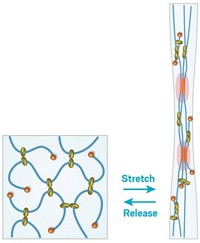Advertisement
Grab your lab coat. Let's get started
Welcome!
Welcome!
Create an account below to get 6 C&EN articles per month, receive newsletters and more - all free.
It seems this is your first time logging in online. Please enter the following information to continue.
As an ACS member you automatically get access to this site. All we need is few more details to create your reading experience.
Not you? Sign in with a different account.
Not you? Sign in with a different account.
ERROR 1
ERROR 1
ERROR 2
ERROR 2
ERROR 2
ERROR 2
ERROR 2
Password and Confirm password must match.
If you have an ACS member number, please enter it here so we can link this account to your membership. (optional)
ERROR 2
ACS values your privacy. By submitting your information, you are gaining access to C&EN and subscribing to our weekly newsletter. We use the information you provide to make your reading experience better, and we will never sell your data to third party members.
Materials
Robust Aerogels
Ordinarily brittle, ultra-low-density porous inorganic solids can be reinforced by forming composites with cellulose
by Mitch Jacoby
February 6, 2012
| A version of this story appeared in
Volume 90, Issue 6
Synthesizing a silica gel inside a cellulose matrix leads to a lightweight yet sturdy composite aerogel, according to researchers in China and Japan (Angew. Chem. Int. Ed., DOI: 10.1002/anie.201105730). Aerogels are high-surface-area porous solids with ultralow densities—they have a wispy, foglike appearance in some cases. The materials are typically derived from gels by replacing a gel’s liquid phase with a gas. They serve as thermal insulators in various applications, including some for use in space missions. But the scope of the applications is limited because aerogels tend to be brittle and fragile. To reinforce aerogels, Jie Cai of China’s Wuhan University, Shigenori Kuga of the University of Tokyo, and coworkers treated nanofibrous cellulose gels with a silica precursor in various concentrations to form a series of composite cellulose-silica gels. They then dried the gels with supercritical CO2, thereby forming strong and flexible aerogels. Some of the products, which were formed as ribbons, were sufficiently robust and flexible to be tied into a knot. “These composite aerogels have inherited the cellulose network’s physical integrity and flexibility,” Cai says.





Join the conversation
Contact the reporter
Submit a Letter to the Editor for publication
Engage with us on Twitter